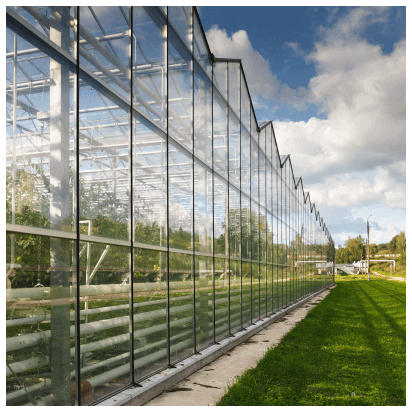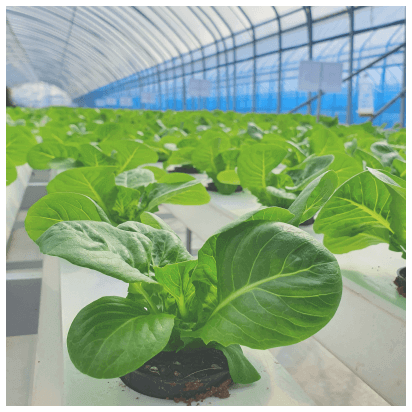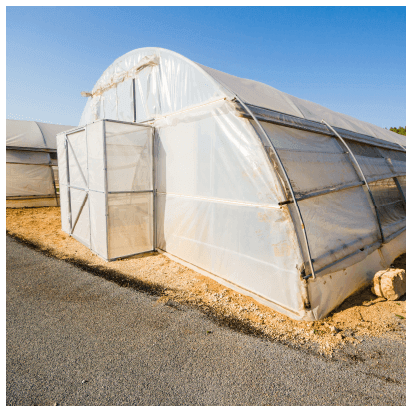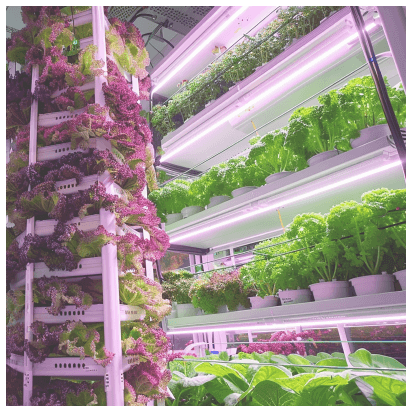Contents
Introduction
Definition
The Types of Commercial Greenhouse
Benefits of Commercial Greenhouse
How to choose a commercial greenhouse when you are a wholesaler or retailer
Conclusion
Introduction
The use of commercial greenhouses over the last few centuries have had an important impact on humanity. They helped Man overcome seasonal limits to a certain degree, allowing for year-round production of vegetables. Coupled with the technological advance in biology, it increased productivity with faster growth cycles. Some countries, such as China, have built the highest number of commercial greenhouses near urban areas to feed its population and ensure prosperous growth. While low-tech greenhouses haven’t seen much improvement in the last decade, greenhouse manufacturers have put a lot of efforts and money into the development of high-tech greenhouses. Buyers, such as farmers, horticulturists, garden centers and nurseries have now more and more greenhouse solutions to choose from. But what is a commercial exactly? How does it work? How is it made? And how should buyers choose based on their use, market and climate? These are questions we are going to answer here today.
Definition
A commercial greenhouse is a freestanding structure, accessible to men and machines, which helps businesses grow vegetables, plants, flowers in otherwise inadequate climates. These greenhouses can also be used by garden centers as display and sales center for greens in the retail industry.
Commercial greenhouses are larger and longer than residential greenhouses. They also use professional grade materials that help businesses improve growing environment conditions. These structures can be glazed with greenhouse plastic or polycarbonate panels, and equipped with fans, water dispensers, heaters etc… To achieve maximum output and uniform product quality.
The Types of Commercial Greenhouse
Understanding the types of greenhouses can help wholesalers align with customers who meet their product requirements
- Glass Greenhouse
 -They have high light transmittance and is suitable for the growth of high-value crops such as tomatoes and cucumbers.
-They have high light transmittance and is suitable for the growth of high-value crops such as tomatoes and cucumbers.
-They can be combined with technology to control temperature, humidity and attention intensity for growing off-season crops.
-Glass greenhouses are usually very durable. They also have a higher cost. Glass greenhouses are often described as high-tech greenhouses because they allow for maximum environment control. We can also find them in public areas such as the greenhouses in the Shanghai World Expo Cultural Park. These greenhouses are used as botanical gardens.
- Polyethylene Tunnel

These tunnel greenhouses, also called polytunnels, can be set up quickly, are considered the cheapest commercial greenhouse kits on the market. They can be disassembled or moved at any time, and are suitable for crops with crop rotation needs.
Compared with glass greenhouses, they are a cost-effective choice. They are suitable for small to large farming businesses, horticulturists, and short-term planting.
- Hydroponic Greenhouses
 It is a structure that combines soil-free cultivation technology with greenhouse environment control. Crop growth is achieved by precisely supplying nutrient solutions.
It is a structure that combines soil-free cultivation technology with greenhouse environment control. Crop growth is achieved by precisely supplying nutrient solutions.
The nutrient solution is recycled to achieve the purpose of water conservation and is suitable for arid areas.
They have a high output rate, are not restricted by seasons, and are suitable for urban agriculture or extreme environments, such as polar research stations
- Vertical Farming Facilities

Vertical farming facilities are a new model that realizes efficient crop production in a highly controllable environment through a multi-layer three-dimensional planting system, especially suitable for urban areas where land is scarce.
High space utilization rate and high production capacity. Reduce the use of pesticides and protect the environment
Benefits of Commercial Greenhouse
- Year-round planting:
Traditional farming is weather-dependent, crops will experience seasonal shortages. The appearance of large greenhouse enables plants to continue growing in winter, solving the problem of seasonal shortages.
- Higher yields:
Large Commercial greenhouses usually occupy a relatively larger area, which leads to an increase in the yield of crops.
- Sustainability:
Compared with traditional agriculture, hydroponics and vertical growth can achieve the recycling of nutrient solutions and save water resources.
- Superior Quality and Consistency:
Under the same temperature, humidity and light conditions, the quality of the crops produced is also similar, which can reduce the probability of defective products while achieving high production capacity.
- Grow non-native plants:
Commercial greenhouses can integrate technology to simulate the growth environment of plants, thereby enabling the cultivation of non-native products and increasing plant diversity.

How to choose a commercial greenhouse when you are a wholesaler or retailer
- 1stparameter : Market Demand
Prioritize the understanding of your target clients,whether they are family farms, large-scale growers, garden centers, or nurseries. Take into accountnd their core needs: enabling profitable production of high-quality vegetables, fruits, or ornamental plants, as well as extending seasons, and protecting from pests and uncontrolled weather. As long as you have a clear understanding of your target market, you can refer to the right type of greenhouses for businesses and start from there.
- 2ndparameter : Market Trends
Look at what your competitors sell, and how they greenhouse kits range evolve. Do not forget to check whether they provide services such as greenhouse construction, or set-up. Greenhouse accessories can be a great driver of sales on the long run.
Your business ought to choose greenhouses that attract your customer base, while including more basic commercial growing tunnel kits. Align your greenhouse choice with emerging trends: demand for cost-optimized solutions that support climate resilience due to climate change and unbalanced natural order; adaptability to new crop varieties, and energy-efficient technologies.
- Supplier Reliability & Reputation
Cooperate with reliable commercial greenhouse manufacturers such as DELITE. Make sure that you and your team go over all the details of your greenhouse order before placing it. Visiting the greenhouse manufacturing workshop is also an option that one should consider in case of OEM greenhouse project.
- Pricing & Profit Margins
When making bulk purchases, you can negotiate discounts to maximize profit margins. MOQ should also be noted to ensure it aligns with your budget and storage capacity.
By carefully evaluating these factors, your reseller business can source high-quality greenhouse kits that meet market demand while ensuring strong profitability and customer satisfaction.
Conclusion
Commercial greenhouses have already transformed the ways of agriculture. With new commercial structures and growing solutions on the market, wholesalers and retailers have more opportunities to meet the evolving needs of their customer base. By cooperating with stable commercial greenhouse suppliers, importers and brands can stay up to date with greenhouses that tackle the many problems that growers have to face, such as climate change, pest development, consuming trends. The target is to ensure high-quality inventory to meet customer demands and strengthen the supply chain.


